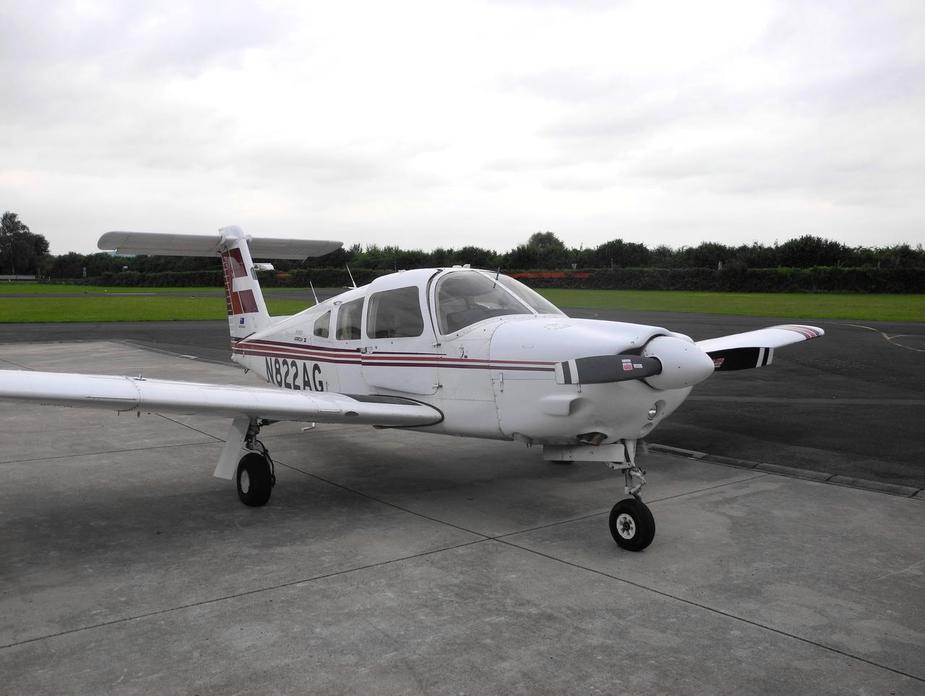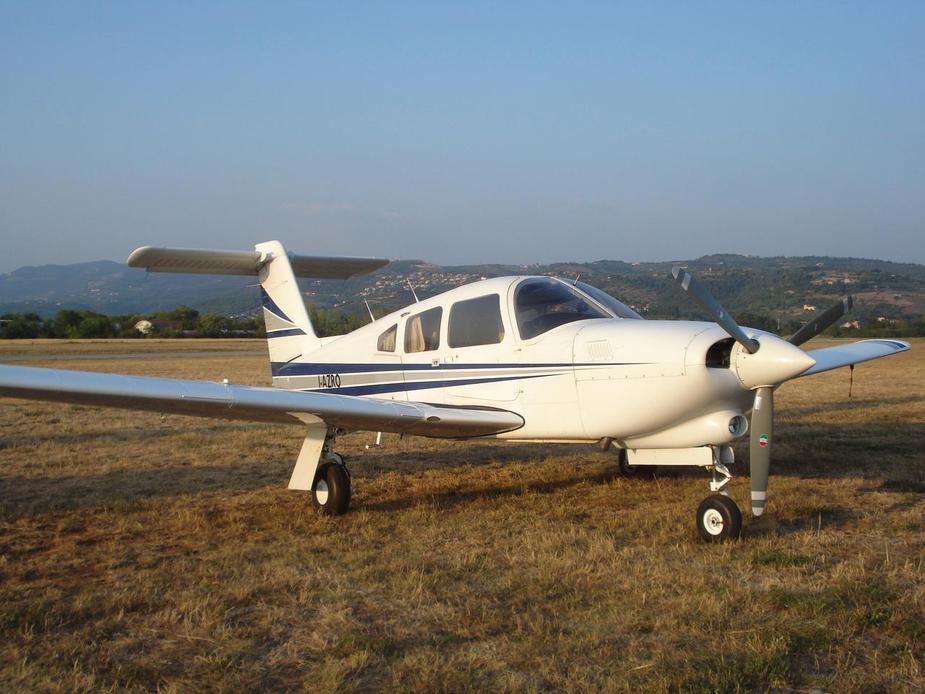I recently joined a small group around a 1979 Piper PA-28RT-201 (aka: “Arrow 4”). IFR, non-turbo.

Even though I have plenty of hours on T-Tail Arrows (albeit most of them on Turbos), I was surprised about the extremely heavy pitch control during rotation and flare. With two persons in the front row and nothing in the back (admittedly quite a forward CG), I had to use all available force in my left hand to raise the nose on takeoff, and even caught myself using both hands in the flare. Now I know that the T-Tail stabilator is mostly outside of the propwash, making it less effective at slow speeds, etc.
However, it never seemed quite so “bad” to me before. In the Turbo Arrow IV that I used to fly…

…it didn’t disturb me at all. Also, after all, one would expect the Turbo (with its heavier six-cylinder Continental) to be even more nose heavy! Doesn’t seem to be the case, though.
If anyone here has some experience with the (non-turbo) Arrow IV: what can be done to make this easier? What technique do you use?
One idea is to trim the aircraft somewhat nose up (both for take-off and for landing), but then one would have to push on the yoke during final approach and after rotation.
Another idea would be to use one or two notches of flaps for take-off, even on long runways, to make rotation less of an effort. But that wouldn’t help with the landings. Maybe using just two notches of flap (instead of three) for landing could make things easier?
Finally, would it be possible that there is something slightly awry with the pitch controls on this particular aircraft, thus making pitch forces so high? Like slightly corroded control cables? Worn pulleys? Lack of lubrication?
Thanks for any pointers.
The first thing I would look at is the pitch trim. Set the control to neutral and look at the angle of the trim tab (not too easy with that all-flying tailplane). Normally these aircraft are very light in pitch and easily overcontrolled during rotation. But if yours is really rigged this way, then I personally would rather set some nose-up trim instead of using flaps for takeoff and more flaps for landing than usual. What’s wrong with having to retrim the plane after takeoff, for me that’s totally normal.
I don’t think there is anything wrong with the aircraft that a five gallon drum of water secured in the baggage bay won’t solve.
- Pitch control gets heavy when there’s dirt in the plastic bushing for the yokes in the panel. Once a year i use a special Teflon spray and all is fine. Do not use other lubricants (grease, engine oil) – it will destroy the plastic
- when the wrong grease is used the pitch trim mechanism in PA-28s can freeze at higher altitudes. I had that one too. Feels scary. Cleaning the whole mechanism and using the right type of grease helps a lot. While the Warrior has the low elevator the components are pretty much the same
For your reference, the design requirement that the Arrow 4 would have to meet includes:
Sec. 23.143
Here: (‘cause I can’t paste the table in here) http://rgl.faa.gov/Regulatory_and_Guidance_Library%5CrgFAR.nsf/0/FDA8A5980F9A7C4A85256687006C4AC2?OpenDocument
And: http://rgl.faa.gov/Regulatory_and_Guidance_Library%5CrgFAR.nsf/0/822484F1A6308FA985256687006C50D2?OpenDocument
The Arrow 4 does have some non standard control forces, though it would also be worth assuring that this aircraft is airworthy.
Firstly, you have confirmed the C of G is within limits, I presume.
You can also review the control travels from the TCDS, here: http://rgl.faa.gov/Regulatory_and_Guidance_Library/rgMakeModel.nsf/0/e0f48f814ea3dd6486257bb20063ad44/$FILE/2A13_Rev_52.pdf
….To assure that the controls are doing what they should. If they are, and the control system is operating smoothly, and with low friction, than probably yes, that’s just the way that plane is – and it wouldn’t be the first one…
Thanks, PIlot DAR,
I have flown it again today and made four landings. I’m getting the hang of it now. Just a bit more nose up trim on takeoff and on landing makes it feel better. It still requires a massive pull though, especially on landing. It’s just totally contrary to the Cirrus, which essentially isn’t flared at all…
Still wondering why the Turbo Arrow is so much lighter in pitch…
I fly a non turbo Arrow IV T-tail of about the same year. 200HP four cylinder. Is yours an electric trim?. Sure it will be.
Also like to know exactly what oil you use – our engine has done its camshaft and followers (lifters) in after approx. 450 hours !!!!
Engine out for a rebuild !!!
This is not normal. I have flown a couple of PA28 that were very heavy in pitch, especially when flown with one hand – in both cases it was the bushing.
The t-tail arrow needs larger control DEFLECTION, the control force is not appreciably higher than in the standard Arrow because the aerodynamic load on the stabilator is the same regardless of where it sits.
There is one simple test if it is the bushing – use both hands, but don’t pull straight, pull a bit sideways (as you unvoluntarily do with one hand). If that makes a significant difference to the feel, get them fixed.
Idly looking at the PA28 speed mods (Knots2U, Laminar Flow Systems, LoPresti) the gap seal kits all advertise improved stabilator authority, plus there’s Hoerner-type stabilator tips that make the same claim. I have no idea on real world performance…